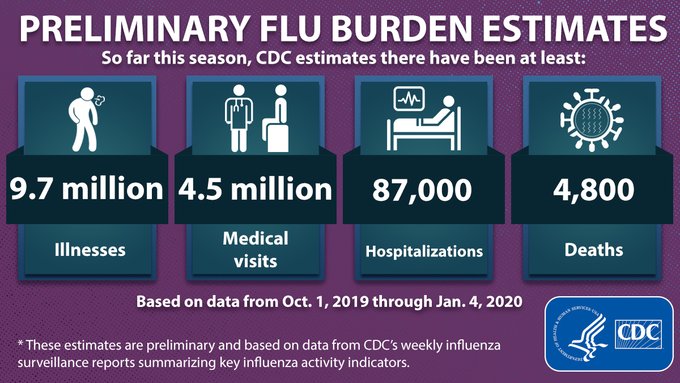This season's flu continues to hit children and young adults particularly hard, with the Centers for Disease Control and Prevention ...
This season's flu continues to hit children and young adults particularly hard, with the Centers for Disease Control and Prevention reporting Friday that there have been twice as many pediatric flu deaths so far this year than at the same time last year.
What's more, a second strain of the virus that more commonly infects younger people is becoming widespread, the CDC reported Friday.
But experts tell NBC News that this year's flu season could end up being less severe overall, based on two indicators of severity: hospitalizations and deaths. That's because this season's prominent virus strains are typically hitting younger, healthier people.
The flu season so far has distinguished itself from previous years with an early rise in a strain of the virus called B/Victoria. That strain typically does not pop up until the end of flu season, in early spring. The flu season typically lasts from October through April, but activity can last as late as May, according to the CDC.
"Flu B has a predilection for striking children," said Dr. William Schaffner, a professor at Vanderbilt University and medical director of the National Foundation for Infectious Diseases. "We're seeing lots of children and more young adults at the present time. That's a reflection of the dominance of flu B."
Post-holiday flu cases are spiking: How to protect yourself
JAN. 7, 202001:43
Another strain of flu — the influenza A strain H1N1 — is also starting to circulate. This strain also typically hits young people harder, said the CDC.
"We’re definitely seeing more than the average number of flu cases this year," Dr. Seema Shah, medical director of the emergency department at Rady Children’s Hospital-San Diego, told NBC affiliate KNSD.
Her department has been so inundated with patients, she's advising families in her area to seek care at urgent care facilities, rather than automatically taking children with milder illnesses to the emergency room.
This past week, the CDC received five new reports of children who died from the flu, bringing the number of pediatric flu deaths to 32 so far this season. At the same point during the 2018-2019 season, there had been 16 pediatric flu deaths.
The agency estimates that at least 9.7 million people have had the flu this season, with 87,000 hospitalizations and 4,800 deaths reported so far.
Forty-nine states, plus Washington, D.C., and U.S. territories are reporting either regional or widespread flu activity, up from 48 last week, with Hawaii as the sole exception.
Though the two prominent strains typically affect younger people, older adults can become ill with these strains.
"Influenza can be severe for anyone, whether it's influenza B, influenza A," said Scott Epperson, an epidemiologist who tracks flu activity for the CDC. "We are seeing hospitalization levels that are at this point comparable to what we've seen in previous years."
It's difficult to predict how the rest of this flu season will play out, Epperson said. However, the CDC's report suggested it's reasonable to expect fewer flu-related hospitalizations and deaths overall.
















No comments